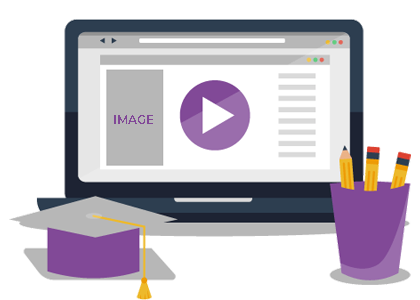Define Learning Path
Benchstep LMS has the feature of defining a learning path, whereas the learning path is a unified learner approach structured and sequenced online to grasp better and retain various topics. Learning path helps in planning and structuring various training activities. For example, starting right from joining an individual in an organization until the very end, a Learning Path ensures rightful and required training is being provided to the employee. Benchstep LMS is flexible, quick to deploy, user-friendly, and could be the best LMS that allows you to create a remarkable online training experience for your audience.
Having a learning path in the course is as important as having a trainer for the training. The learning path will help you know what you will be learning in the entire course, even before starting the course. It will give you a brief idea of how the trainer will teach the entire course in a flow and what all methods are being followed that will help assess the learner's knowledge.

- Audio: The course provider can add audio files by using the audio tool. This tool will help the users with the audio components. The supported formats for adding the audio path to the course are .mp3, .wav, .wma, .aac formats for the units.
- Video: If the course providers want to add more visual content to the course, they can use the "video" tool. With the help of the video tool, students will be able to see the course videos. The supported units of the video learning path are .flv, .vob, .mp4, .webm, .avi, .wmv.
- URL-Link: If course providers don't have the video in hand and want to embed the content from external links, they can insert the link of YouTube URL or any website URL.
- Image: For a better explanation and visual representation, the course providers can add the "image" tool to insert images in the course. The supported formats for the Images are .png, .jpg, .jpeg, .gif.
- Content: To make the course more impactful and knowledgeable, the course provider can provide the content in any form in the Learning Path structure.
- Presentation: If the course provider has presentations that need to be included in the course for reference purposes or studies, he can add the presentation to the Learning path. The supported formats of presentations are .pdf, .doc, .docx, .xls, .xlsx.
- Assignment: When assignments are given to the learners, the course creator can create the assignments and give them to the students. Students can know that assignments are going to be there by seeing the learning path structure.
- Assessment: With the assessment tool, the course creator will add new assessments in the course for students.
- Certificate: Course creators can create certificates, making them completely customized according to their choice. They can create new certificates for issuing the certificates after completion of the course or exam.
- Meeting: The course creator can conduct meetings while doing the course. In the learning path, the course creator will also be able to create meetings.
- Webinar: If course creators want to do webinars in their course, they can do it by using this tool. By choosing the "create new" course, the creator will be able to create a new webinar.
- SCORM File: If course creators want to upload SCORM files, they can upload them in Zip format.
